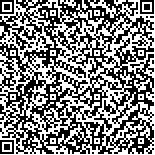下载中心
优秀审稿专家
优秀论文
相关链接
摘要

辽宁西部大面积的油松(Pinus tabulaeformis)人工林长期受到油松毛虫(Dendrolimus tabulaeformis)的危害,通过遥感技术,可以及时、高效、精准地对此大面积灾害进行监测,并获知地形、气象因子对其的影响。本文利用遥感和地理信息系统(GIS)技术,使用TM、ETM+数据,通过近红外与红光波段反射率的比值RVI,对油松的受灾程度进行了有效监测。前人的研究发现:油松毛虫易在干燥、温暖的环境爆发,本文将监测分类结果与地形、气象数据叠加后,分析发现结果亦与油松毛虫的生物学特性相吻合,由此逆向证明了监测结果的可靠性。通过对影像灰度直方图的分析,发现近红外波段对轻度的虫害敏感;红光波段对重度的虫害敏感。对影响因子的分析发现:油松毛虫在阳坡,坡度缓的地区危害更剧烈;在日照时数长、降雨少、积温低的地区,油松的受灾程度更重。此结论为预测虫害爆发的概率提供了依据。本研究表明:在森林灾害的遥感工作中,利用监测对象的生物生态学特性,可以在实地调查数据不足,难以直接对监测结果进行评价的情况下,判断结果的可靠性。利用此方法,一定程度上可以减少调查的工作量,降低外业的难度。
Considering that a large area of Pinus tabulaeformis suffers from Dendrolimus tabulaeformis in West Liaoning, this study monitored Dendrolimus. tabulaeformis disaster promptly, efficiently, and precisely through remote sensing technology. Information on the influencing factors, such as geography and meteorology, was collected to provide a reference for future prediction.
This study adopted the method of Thematic Mapper (TM), Enhanced TM Plus data source, and Geographic Information System technology to examine the image gray histograms of injured Pinus tabulaeformis with various damage degrees and monitor the damage degrees by using the Ratio Vegetation Index (RVI)[near infrared(NIR)/red]. To analyze the imposing factors, the classification results from RVI analysis were overlapped with geography and meteorology statistics, with cross reference to previous studies on the biological characteristics of Dendrolimus tabulaeformis. By analyzing the image gray histograms, this study determined that in the Pinus tabulaeformis spectrum, the NIR band shows high sensitivity to mild infection, whereas the red band shows high sensitivity to severe infection. Therefore, using RVI, which combines the two bands, prompts the disaster monitoring. The monitoring results are in accordance with the biological characteristics of Dendrolimus tabulaeformis, which prefer dry and warm environments, thus proving the efficiency of the remote sensing monitoring. For the factors that influence the damage, Dendrolimus tabulaeformis prefers south gentle slopes. Areas with long sunshine time, minimal rain, and low accumulative temperature suffer from severe damage. This finding provides a basis to predict the probability of disaster outbreak.
By applying a novel converse method to test the reliability and accuracy of monitoring results, this study showed that researchers could take advantage of the biological and ecological characteristics of remote sensing objects to assess the reliability of results when forestry damage field investigations are lacking and there isno access to fieldwork sample statistics to estimate the monitoring results. This procedure could reduce the load and difficulty of field investigations.

